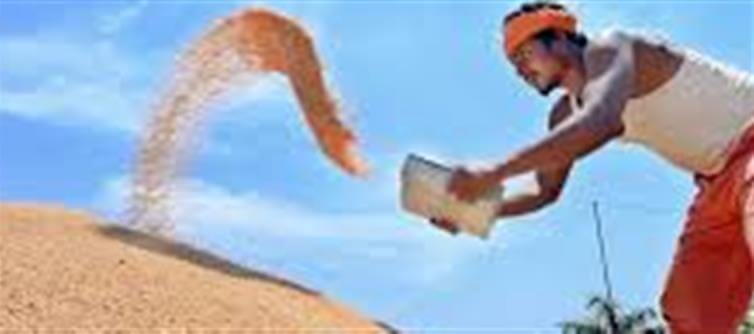
In a move to support India’s farming community and enhance their income, the Cabinet Committee on Economic Affairs (CCEA), chaired by Prime Minister Narendra Modi, has approved a significant increase in the Minimum Support Prices (MSP) for all mandated rabi crops for the 2026-27 marketing season. This decision comes as part of the government's ongoing efforts to ensure remunerative returns for farmers and strengthen the agricultural sector.
Key Highlights of the MSP Increase
1. Substantial Hike in MSP for Rabi Crops
The MSPs for key rabi crops have been raised across the board. Crops like wheat, gram, barley, mustard, and lentils are expected to see increased support prices, which will directly benefit millions of farmers across the country. This move aims to provide farmers with better profitability, especially amidst challenges such as fluctuating market prices and unpredictable weather conditions.
2. Boost to Wheat and Mustard Farmers
· Wheat, a staple rabi crop, will see a significant rise in its MSP. This increase is especially important as wheat plays a crucial role in India’s food security and is a primary crop in states like Punjab, Haryana, and Uttar Pradesh.
· Mustard farmers will also benefit from an increase in MSP, which is expected to support oilseed production and reduce India’s dependence on imports of edible oils. States like Rajasthan, Madhya Pradesh, and Uttar Pradesh will be major beneficiaries.
3. Enhanced Support for Pulses and Oilseeds
· Gram and other pulses will see an increase in their MSP, reflecting the government’s commitment to enhancing domestic pulse production and improving nutritional security.
· The increase in MSP for lentils and barley will further encourage production of these critical crops, which have become increasingly important due to their role in crop diversification and enhancing soil health.
4. Encouraging Crop Diversification
With increased MSPs, the government is hoping to encourage farmers to diversify their crops and make agriculture more sustainable. By offering attractive prices for different crops, the government aims to shift some focus from water-intensive crops like rice and sugarcane to more resource-efficient rabi crops such as barley, lentils, and mustard.
Impact on Farmers' Income
The increased MSPs are expected to directly impact farmers' income by providing them with a safety net against market price fluctuations. With MSPs acting as a guaranteed floor price, farmers will have more confidence in growing rabi crops, knowing they will receive a fair price for their produce.
The government’s decision to raise MSPs is expected to boost rural economies, as farmers’ disposable incomes increase. This is especially critical for the livelihoods of smallholder farmers who often struggle with lower returns due to price volatility.
Why the MSP Increase is Crucial
1. Addressing Rising Input Costs
In recent years, farmers have faced rising input costs such as fertilizers, seeds, and labor, which have squeezed their margins. The MSP hike aims to offset these rising costs, providing farmers with a cushion and helping them stay financially stable.
2. Agricultural Sustainability
India’s farming sector faces several challenges, including climate change, water scarcity, and land degradation. By incentivizing farmers to grow a diversified range of crops, the increased MSP could contribute to more sustainable farming practices, reducing over-reliance on water-intensive crops and improving soil health.
3. Ensuring Food Security
Increasing MSP for crops like wheat and mustard is crucial to ensure that India’s food security is maintained. These crops are integral to the country's staple food supply, and the MSP rise is designed to support production levels that can meet both domestic demand and export potential.
Looking Ahead: What This Means for the 2026-27 Marketing Season
The rise in MSP for the 2026-27 marketing season is expected to be a game-changer for rabi crop farmers. The government has stated that it is committed to ensuring that the MSP is sufficient to encourage farmers to grow crops that are critical to India’s food and nutritional security.
The implementation of the new MSP rates will begin in October 2025, with the marketing season for rabi crops starting soon after. The rabi crop sowing season typically begins in October and lasts until March the following year, with harvesting happening in late march to April.
Conclusion
This significant increase in the MSP for rabi crops signals the government's ongoing commitment to farmers’ welfare and its efforts to boost agricultural productivity. As farmers across india gear up for the upcoming rabi season, the raised MSPs are expected to enhance their financial security, encourage crop diversification, and support sustainable farming practices. Ultimately, this decision will contribute to the economic empowerment of rural India and help strengthen the country's agricultural resilience.
Disclaimer:
The views and opinions expressed in this article are those of the author and do not necessarily reflect the official policy or position of any agency, organization, employer, or company. All information provided is for general informational purposes only. While every effort has been made to ensure accuracy, we make no representations or warranties of any kind, express or implied, about the completeness, reliability, or suitability of the information contained herein. Readers are advised to verify facts and seek professional advice where necessary. Any reliance placed on such information is strictly at the reader’s own risk..jpg)




 click and follow Indiaherald WhatsApp channel
click and follow Indiaherald WhatsApp channel